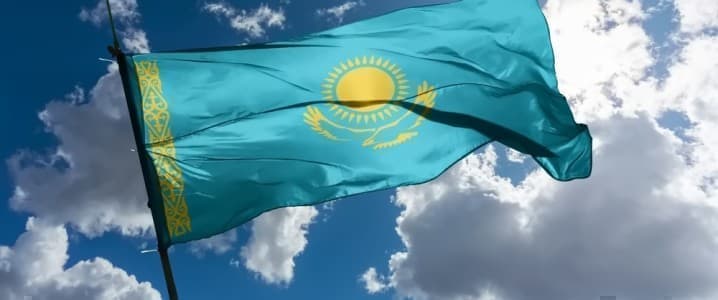
Astana is upbeat about boosting oil exports, despite caveats over how the war in Ukraine may impact markets and questions about its recently launched shipments to Europe.
Kazakhstan plans to increase oil supplies via its main export pipeline to Russia by over a third by the end of next year, Energy Minister Bolat Akchulakov said this week during an industry conference in Texas.
That is fighting talk, given the troubles that have beset the Caspian Pipeline Consortium, whose supplies were halted four times last year.
Official explanations for the disruptions have not convinced skeptics, who believe Moscow is using the CPC as political leverage over Kazakhstan to coerce it (unsuccessfully) to support Russia’s war in Ukraine.
Astana aims to increase exports through the pipeline, which carries about 1 percent of global oil, to 60 million metric tons this year, Akchulakov said during the CERAWeek energy conference in Houston. That would be a rise of 15 percent on the 52.2 million metric tons it shipped last year. Next year, it intends to ramp up exports by another 20 percent to 72 million metric tons. If successful, that would amount to a 38 percent rise over two years.
This is possible after an expansion on Kazakhstan’s section of the CPC pipeline, completed in January, increased its capacity from the current 53.7 million metric tons to 72.5 million.
Kazakhstan is heavily dependent on the CPC, which carries four-fifths of its oil exports. Russia is not: Kazakh oil accounted for 88 percent of the CPC’s shipments in 2022.
Kazakh supplies through the CPC were down 1 percent in 2022, owing to pipeline disruptions, but still accounted for 81 percent of Kazakhstan’s exports of 64.3 million metric tons.
Pipelines to Russia carried 94 percent of Kazakh oil, with the CPC accounting for the bulk and a pipeline from the Kazakh city of Atyrau to the Russian city of Samara delivering the remaining 13 percent.
The rest of the oil went across the Caspian Sea by tanker to join the Baku-Tbilisi-Ceyhan pipeline to Turkey (2.3 million tons, or nearly 4 percent of Kazakhstan’s exports) and to China along the Atasu-Alashankou pipeline (1.2 million, or nearly 2 percent).
Small amounts were shipped to the Georgian port of Batumi and Uzbekistan, Reuters reported.
On orders from President Kassym-Jomart Tokayev, Kazakhstan is seeking to diversify export routes because of the war, by implication to reduce reliance on sanctions-hit Russia.
That is Kazakhstan’s “number one problem,” Akchulakov told the Houston energy conference.
Building a new pipeline to carry oil east across the Caspian Sea could take up to five years, he said. He did not mention that Russia, as a littoral state, would certainly try to veto it.
Kazakhstan upped oil supplies via non-Russian routes last year, but only by 638,000 tons, according to Reuters.
In late February Kazakhstan started pumping oil to Germany, to make up for shortfalls after EU countries banned most Russian oil. But that oil still must pass through Russia.
Kazakhstan has agreed to ship 300,000 tons to Germany in the first quarter of this year through the Druzhba pipeline across Russia, reached via the Atyrau-Samara pipeline, and has applied to send 1.2 million tons along the route this year. The ever-bullish energy minister has said Kazakhstan could in theory find up to 6 million tons to send to Europe annually.
But the first shipment of 20,000 tons was delayed from January, and Kazakhstan “is struggling to find enough crude oil to meet requests from European countries for deliveries through Russia’s Druzhba pipeline system that would allow them to reduce their dealings with Moscow,” Bloomberg reported this week, citing anonymous sources and blaming falls in output on maintenance work at oilfields.
In addition, Bloomberg said, Kazakh oil producers are “wary of using the Druzhba link because they can earn better returns by using other export routes.”
Energy officials also used the Houston forum to talk up Kazakhstan’s rebranding of its oil to disassociate it from Russian oil.
Oil from Kazakhstan was previously exported as REBCO, Russian Export Blend Crude Oil, which the world knows better as Urals crude, but last June was rechristened KEBCO. That allowed Kazakhstan to “minimize risks to Kazakhstan’s oil and gas companies,” Magzum Mirzagaliyev, the head of state energy firm KazMunaiGaz, said.
There is evidence for that: KEBCO is trading at about $20 more per barrel than REBCO, according to Reuters.
Kazakhstan is forecasting oil output at 90.5 million metric tons this year, and exports at 71 million tons. But as Energy Minister Akchulakov pointed out, Astana’s oil ambitions are dependent on the vagaries of the war in Ukraine.
“I believe that events in geopolitics create an ocean of uncertainty,” he said, which made forecasting difficult. “However, we have to move forward. There are many opportunities.”
Source: https://oilprice.com/
